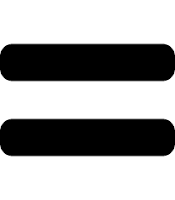I discovered something last semester that made me insert a new little thing in the first day of my basic-level (remedial, liberal arts) community college math courses. A surprising proportion of my students are very confused about what the equality (=) sign means.
Now, this isn't a tremendously novel observation, e.g., see: Baroody, Arthur J., and Herbert P. Ginsburg, "The effects of instruction on children's understanding of the 'equals' sign." The Elementary School Journal 84.2 (1983): 199-212. But the new discovery for me was how extremely simple a question it takes to make this visible.
All I've done is start asking, "True or false? (a) 6 = 6, (b) 3 = 5". So far, everyone, confidently answers "true" to the first. But it seems like fully half of my students answer the second one incorrectly.
Last semester I had at least one or two students who were so enormously challenged that we could repeat this every day all semester and they'd never get it right. "True or false? 0 = 100"; "True"; "No, it's false"; "I don't get it". Over and over again every day, no matter how many times it was explained.
It seems pretty amazing, but there it is. Lots of our incoming community-college student literally don't now what the equals relation means. My best guess is that they've either come to think of it as "and here's the next thing", or that maybe instructors have been double-checking solutions to equations and every single time it's always come out true.
I suppose it would be a decent research project to interview such students and ask them to explain what they think the equals sign means. Consider trying that for an opening exercise and share what your results are?
